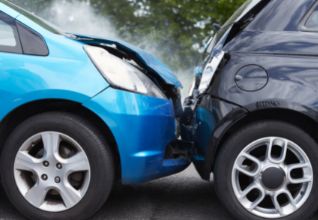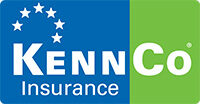Tips for Driving in Icy & Winter Conditions
As winter is nearly upon us again, we advise drivers to service their vehicles and carry out a few simple precautions so you can drive safely over the winter months. Don’t get caught out this winter. Make the necessary checks on your vehicle now.
Slow down And Maintain distance
Snow and ice can make roads slippery and reduce visibility, so it’s important to reduce your speed and leave plenty of space between you and the vehicle in front of you.
It is recommended that you keep a two second distance between you and the car in front. This is known as the ‘two second rule’ in the Rules of the Road. However, when you are driving in icy or wet conditions stopping distances increase, so give yourself extra space to react.
In wet weather, double the distance between you and the vehicle in front; and in icy conditions you should increase stopping distance by four or five times the two-second rule. This should give you plenty of time to react if the vehicle ahead loses control or brakes suddenly.
Make sure you can see before setting off
Ice and snow can seriously reduce your visibility. So, before setting off on any journey, make sure you can see fully and clear all windows and mirrors of ice and snow.
You can use a de-icing spray and scrape to clear a frozen windshield so make sure you carry both in your car. Never use boiling or hot water to clear a windshield as it can crack the glass.
Inside, use your car’s heating and air conditioning controls to demist your windscreen and windows by blasting the air upwards towards the windshield. Most modern cars have climate controls that come with a built-in demist setting, just follow the instructions in your car handbook.
Don’t start your journey until all glass surfaces are completely clear.
Driving on Icy Road
When driving on icy roads, the Department of Defence advise motorists and the public who are driving on icy roads to:
- Be on the lookout for pedestrians, cyclists and other vulnerable road users.
- Keep your windows and windscreen clear of snow and ice during your journey.
- When driving, manoeuvre gently and avoid actions such as harsh braking, acceleration or oversteering as these can induce a skid.
- Use the highest gear possible to reduce the engine revs as this will help avoid wheel spin..
- When travelling downhill, especially through bends, use as low a gear as early as possible and allow your speed to reduce using the brake pedal gently.
Tyre Maintenance
Give your tyres a thorough inspection over the next couple of weeks.In colder temperatures, tyres can lose pressure more quickly. Make sure your tyres are equipped for winter with adequate tread depth to handle icy or snowy conditions. Consider switching to winter tyres if you live in areas with frequent snow and ice.
- Check the pressure in each tyre.
- All tyres should have at least 3mm of tread.
- Check for bulges on the sides of tyres
- Check for signs of puncture, glass, nails or any other objects that could become embedded in a tyre.
Check out our article on tyre maintenance for more tips.
Battery
Cold weather can be hard on your car’s battery. Have it checked to ensure it’s in good condition. If your battery is over three years old, it might be a good time to replace it to avoid breakdowns during the colder months.
Brakes
Get your brakes checked by an experienced mechanic to ensure all components are in good working order for winter driving.
On slippery roads, it’s important to brake gently to avoid skidding. If your car has anti-lock brakes (ABS), press the pedal firmly and hold it. If your car does not have ABS, pump the pedal gently.
Engine Oil
Low temperatures can cause engine oil to thicken. Make sure your car’s oil and other essential fluids (coolant, brake fluid, etc.) are at the correct levels and appropriate for winter conditions.
When the engine is cold, remove the engine oil dipstick, clean it, and reinsert it. You will see a maximum and minimum marker on the dipstick. If the oil is between these two markers, driving the car is okay. However, if below the minimum marker, you shouldn’t drive the car until the oil has been topped back up.
Lights
Make sure to keep your headlights, taillights and indicators clean, working correctly and clear of any ice or snow. Replace bulbs if necessary and use your dipped headlights so that other drivers can see you.
Windscreen & Wipers
Give your windscreen a thorough clean inside and out before the winter kicks in, as the low sun can be dangerous to drive if your windscreen is dirty. Inspect your wipers and replace them if they are worn.
Anti-Freeze
Check coolant levels regularly and if required, top up with a mixture of the correct type of antifreeze.
Prepare an Emergency Kit
It’s always important to have an emergency driving kit in your car. The emergency kit should include a high visibility vest, flashlight, extra batteries, water, de-icer and scraper, demisting cloth, car phone charger and a first aid kit.
Your car winter emergency should include:
- A blanket
- A flashlight with extra batteries
- A first-aid kit
- Non-perishable snacks
- Water
- Jumper cables
- A shovel (in case you’re stuck in the snow)
- Sand or salt (for traction)
For more information on winter driving safety visit the Road Safety Authority website.
Watch Out For Black Ice
Black ice is one of winter’s most dangerous hazards because it is nearly transparent, or might often look like a simple wet patch on the tarmac. Be on the look out for black ice in areas that are prone to staying cold longer, such as:
- If the road looks polished or glossy it could be black ice
- Sheltered and shaded areas of road
- Roads under heavy tree cover
- Under bridges and overpasses
- Next to high walls
If your steering suddenly feels light and the noise from your tyres drops to a near-silence, you are likely driving on ice. Lift off the accelerator immediately and allow the car to slow down naturally without braking until you feel grip return.
Stay informed
Keep an eye on weather forecasts and road conditions, and avoid driving if possible, during severe weather. Having up-to-date information will allow you to adjust your plans accordingly.
Not only is it important to prepare your car for the winter, but you should also remember that winter weather conditions can increase the number of road accidents. Having comprehensive car insurance is vital to cover any expenses or losses incurred as a result of a car accident. If you are looking for great value car insurance, KennCo provides all the cover you need. All our car policies come with windscreen cover and 24-hour breakdown assistance with home start.

Looking to Save On Your Car Insurance?
At KennCo, our car insurance cover offers competitive rates and valuable benefits, including a replacement car as standard. Get peace of mind knowing you’re fully covered.


